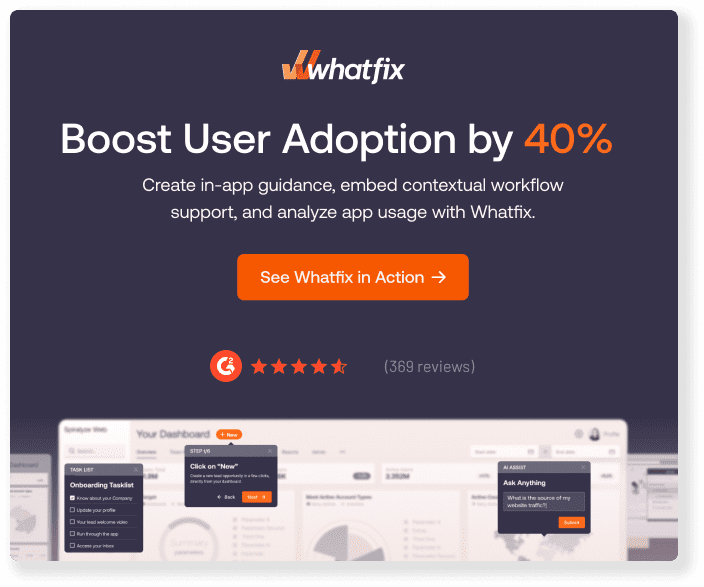Financial service firms are under pressure from all sides to modernize. Consumers now expect the same fast, seamless digital experiences from FinTechs and big tech. At the same time, banks and insurers are facing tighter regulations, shrinking margins, and a wildly unpredictable risk landscape. Keeping up isn’t enough anymore—staying competitive means staying several steps ahead.
That’s why AI is getting so much attention across the industry. And not just as a buzzword—AI is driving real results. 86% of financial service professionals reported a positive impact on revenue from AI initiatives, while 82% noted a reduction in cost, and 92% of U.S. companies. From detecting fraud faster to automating routine processes and powering smarter credit decisions, AI is powering financial service transformation and helping teams move faster, make better calls, and serve customers in more personalized ways.
But here’s the catch: these algorithms don’t create value independently. The real ROI comes from how AI gets used by real people, in real workflows. Without the right integration, design, and support, even the most innovative tools collect dust.
This article explores where AI is generating tangible value in financial services today, how leading institutions are deploying it across lines of business, and what it takes to drive adoption at scale. Because ultimately, the future of AI in finance isn’t just about more innovative machines—it’s about empowering smarter human decisions.
AI Value Drives for Financial Services
AI is not just advancing technology; it’s reshaping how financial institutions operate, compete, and grow. When implemented strategically, AI enables firms to move faster, reduce operational drag, and unlock new sources of value. Its true impact is not seen in isolated tools, but in how it transforms core functions—from decision-making to service delivery.
1. Operational efficiency & cost reduction
AI reduces friction in high-volume, rule-based operations by automating tasks that were once time- and labor-intensive. In financial services, this includes insurance claims processing, loan origination, Know Your Customer (KYC) verification, and account onboarding. AI-powered systems can now ingest documents, verify identities, and flag anomalies with speed and precision exceeding manual efforts.
Technologies like intelligent document processing (IDP) and robotic process automation (RPA) work in tandem to extract data from unstructured sources (PDFs, scanned IDs, handwritten forms, etc.) and automatically route the extracted data into structured, rule-based approval workflows for validation and escalation. This streamlines customer service, reduces operational costs, and ensures consistency across distributed teams.
2. Risk management & fraud detection
AI identifies patterns within large, complex datasets, making it particularly effective for fraud detection, transaction monitoring, and credit risk modeling. Financial institutions use machine learning to scan payment activity, behavioral signals, and device metadata to detect anomalies in real time and reduce false positives in fraud alerts.
Beyond transaction surveillance, AI improves credit risk modeling by incorporating nontraditional data sources (such as income volatility, cash flow analysis, and even social signals). These models enhance underwriting precision for thin-file borrowers with limited or no traditional credit history and dynamically adjust risk thresholds in response to evolving portfolio conditions.
3. Hyper-personalized customer experiences
Personalization has become a critical baseline expectation in a market where customer loyalty is fragile. AI enables financial institutions to move beyond demographic targeting and deliver highly relevant experiences by analyzing customer behavior across products and channels, tracking interactions such as transaction types, app usage, and call center history.
NLP and recommendation engines help surface tailored product offers, financial tips, and nudges at precisely the right time (via the customer’s preferred channel). This not only improves Net Promoter Score (NPS), retention, and cross-sell performance, but also increases the lifetime value of each customer by aligning offerings with their financial goals and providing an overall contextual banking customer experience tailored to each account holder and customer..
4. Regulatory compliance and reporting
Compliance is becoming more complex and costly. AI enables a proactive and scalable approach to compliance. Natural language models can interpret new regulatory updates (such as those from the SEC, FINRA, and EBA) and map them against internal policies and controls to identify gaps and inconsistencies. This reduces reliance on manual reviews and helps teams stay audit-ready.
In operations, AI supports real-time compliance monitoring by embedding automated controls into workflows for transaction reporting, sanctions screening, and the generation of Suspicious Activity Report (SAR) as part of broader regulatory processes. These systems aggregate customer data, transaction histories, and investigative notes into submissions ready for regulators, reducing manual workload and improving reporting accuracy, consistency, and speed.
5. Revenue growth and competitive differentiation
AI offers new commercial models through real-time personalization, predictive targeting, and dynamic product bundling. Financial institutions can identify high-value segments, forecast customer needs, and refine campaign timing with a level of precision unattainable through traditional analytics alone.
More strategically, AI powers the next-generation offerings such as robo-advisors for automated wealth management, predictive investment tools that model market behavior, and hyper-personalized insurance products tailored to individual risk profiles.
These innovations attract new customers and deepen relationships by improving cross-selling and upselling strategies. Advanced clustering techniques enable institutions to segment users based on financial behaviors (not just demographics), ensuring that product offers are timely, relevant, and conversion-optimized.
6. Accelerates decision-making in underwriting and lending
In lending, underwriting, and capital market trading environments, delays in decision-making often translate into lost opportunities. AI reduces this friction by delivering instant, data-informed recommendations–whether assessing creditworthiness, flagging portfolio risk, or triaging support tickets. By embedding AI models directly into frontline decision-making interfaces (CRM systems, trading dashboards, or case management platforms), institutions ensure their employees can make faster, more consistent decisions—even in the most complex scenarios. In turn, teams can act clearly and confidently, knowing their actions align with institutional risk and compliance standards.
AI Use Cases in Financial Services
AI is no longer an experimental edge technology; it has become a cornerstone of operations across every corner of the financial services industry. From customer-facing chatbots to behind-the-scenes compliance automation, leading institutions are embedding AI in use cases that deliver speed, accuracy, and scale.
1. Retail banking
Retail banks use AI to redefine customer service, engagement, and retention. United Federal Credit Union has deployed an AI-powered chatbot (“Finn”) as a virtual assistant that now handles 80% of routine service inquiries, including balance checks, transaction history, and password resets, without live agent involvement. This deflection reduces contact center load and allows human agents to focus on high-complexity interactions.
AI is also powering churn prediction and product personalization. By analyzing app usage patterns and behavioral indicators, banks are flagging at-risk customers and intervening with retention offers. According to McKinsey, AI enables banks to reimagine customer engagement by delivering more personalized, real-time experiences, resulting in improved retention, higher satisfaction, and greater digital loyalty, particularly among younger and digitally savvy customers.
2. Wealth management
AI is transforming wealth management by scaling personalized advice. Robo-advisory platforms, such as Betterment and Wealthfront, utilize algorithmic portfolio rebalancing and goal-based investment planning to serve clients at a fraction of the cost of traditional advisory services. As of 2023, robo-advisors manage over $2.76 trillion in global assets, reflecting growing adoption across mass affluent and younger investment segments.
Firms also use AI to create personalized financial planning scenarios tailored to individual goals, timelines, and risk preferences. Advisors can deliver more customized strategies by dynamically modeling “what-if” simulations without spending hours poring over spreadsheets. This automation expands advisor capacity, boosts client satisfaction, and reduces overhead for firms managing hybrid portfolios.
3. Insurance
In the insurance industry, AI is automating complex, document-heavy workflows quickly and precisely. Platforms like ABBYY’s FlexiCapture support high-volume claims processes by scanning and extracting data at a rate of up to 2,000 pages per minute, enabling insurers to replace multi-hour manual review with near-instantaneous data ingestion. Compared to manual data entry rates (~200 pages per hour), this represents a 600-fold improvement in throughput.
Insurers also use computer vision and NLP to analyze photos, accident reports, and medical documents submitted by policyholders, streamlining first notice of loss (FNOL) intake and reducing average claim resolution time. On the underwriting side, AI-powered risk modeling now enables carriers to price policies more accurately by incorporating variables like IoT sensor data, lifestyle patterns, and historical claims, moving beyond traditional actuarial tables to real-time risk intelligence.
4. Lending and credit
AI is transforming how lenders evaluate creditworthiness and approve loans. Traditional credit scoring often excludes applicants with limited histories. However, AI-driven models (like those used by Upstart or Zest AI) analyze alternative data, such as behavioral signals, cash flow, and employment history, to expand credit access. For example:
Upstart
- Loan approvals: According to a 2025 report, Upstart’s AI models have enabled lenders to approve 101% more applicants compared to traditional models, while also offering loans at 38% lower APRs.
- Automation: In 2024, 91% of loans processed through Upstart were fully automated, eliminating the need for human intervention.
- Risk assessment: Upstart’s AI models achieved six times greater risk separation between the highest and lowest risk grades compared to traditional FICO scores.
Zest AI
- Approval rates: Lenders using Zest AI’s models have seen a 25% increase in loan approvals without increasing their risk profile.
- Automation: Zest AI enables auto-decisioning for 80% of applications, ensuring consistency and efficiency across all loan categories.
- Fairness: The technology has helped increase approvals by 30% on average across protected classes (groups legally safeguarded against lending discrimination, such as those based on age, race, and gender), promoting more equitable lending practices.
AI also improves the efficiency and fairness of the loan approval process. Automation streamlines identity verification and fraud detection during origination, reducing turnaround times from days to minutes.
On the backend, explainable AI ensures that decisions remain transparent and compliant, supporting adherence to fair lending laws while minimizing risk exposure.
5. Capital markets
Capital market firms rely on AI to process large volumes of data at speeds beyond human capability. AI is now central to algorithmic trading, where reinforcement learning systems (like JP Morgan’s LOXM) continuously learn and dynamically adjust execution strategies to minimize slippage and reduce the market impact of large trades.
These systems break up larger orders into smaller chunks, optimize the timing of each trade based on real-time liquidity, and route orders across multiple venues to avoid triggering extreme price fluctuations.
Natural language processing is also deployed to analyze unstructured data sources (such as earnings call transcripts, regulatory filings, and financial news). Portfolio managers and quantitative analysts can make more informed decisions by extracting sentiment and thematic signals, like recurring topics or macro trends in unstructured data. This gives institutions a competitive edge in volatile markets where reaction time and information depth are critical.
6. Compliance and Anti-Money Laundering (AML)
Compliance teams are deploying AI to manage rising volumes of suspicious activity and keep pace with increasingly complex regulatory obligations. AI models continuously monitor transactions across accounts and channels, flagging anomalous behavior based on risk thresholds, velocity patterns, and evolving typologies—emerging patterns of illicit activity that criminals use to evade detection. These systems learn from past investigations and analyst feedback, adapting faster than static rule-based engines as money laundering tactics evolve.
AI also automates the generation of SARs (Suspicious Activity Reports) in response to flagged AML events, streamlining how relevant case information (such as identity records, transaction anomalies, and review summaries) is organized and submitted. This reduces the manual burden on compliance analysts, improves report quality, and ensures prompt submission to regulators, which is critical for maintaining both operational efficiency and institutional credibility under heightened scrutiny.
Driving AI Adoption and Value Realization in Financial Services
While AI’s technical potential is well-established, its real value depends on effective adoption. Financial institutions that simply layer AI tools onto legacy processes often see disappointing results and may even create long-term technical debt. As McKinsey notes, truly transformational impact requires fundamentally rethinking workflows and business models with AI at the core. Successful AI adoption depends not just on the technology, but on how it’s introduced, integrated, and embraced by users.
1. Invest in change management from day one
Successful AI adoption starts with stakeholder alignment and an effective change management plan. Leaders must communicate how AI will augment, not replace, employees’ roles while providing clear roadmaps for integration. Managers play a crucial role in reinforcing new behaviors, modeling their use, and promptly addressing concerns.
2. Empower users with in-app guidance and support
Giving teams access to new AI tools isn’t enough—if they don’t understand how to use them, or where those features fit into their day-to-day work, adoption stalls.
With a digital adoption platform like Whatfix, you can layer in real-time, in-app guidance right inside your existing tools—CRMs, underwriting platforms, trading systems, you name it. When a new AI-powered workflow rolls out, users aren’t left guessing; they get interactive walkthroughs, nudges, and tooltips that explain what’s happening and what to do next—without ever leaving the screen.
Let’s say an AI model flags a risky transaction or suggests the next-best product for a client. Whatfix can surface an on-screen message that walks users through what that means and how to respond. If someone’s unsure how to interpret a new AI-generated score or trigger, contextual help is right there—no training session or support ticket required.
Bottom line: AI only delivers value when people use it. Whatfix helps make that happen—by meeting users in the moment, inside the tools they already use, with support that actually helps them do their jobs better.
3. Design AI interfaces with the end user in mind
Adoption slows down when AI tools feel opaque or disconnected from daily work. AI interfaces must be transparent, intuitive, and seamlessly integrated into existing workflows to build trust and drive real engagement. Insights should be presented in plain language, with clear relevance to the task at hand. Interfaces that mirror familiar tools (rather than reinventing them) help minimize disruption and encourage consistent use.
4. Build an AI feedback loop
AI systems aren’t set-and-forget. To stay relevant and trusted, they need to evolve alongside user behavior, business goals, and regulatory shifts. That starts with listening to the people using them.
Whatfix helps you close this loop by making it easy to gather real-time feedback, right inside the flow of work. You can embed feedback widgets, prompt users to rate AI suggestions, or add escalation paths directly into the UI. If an AI-generated recommendation feels off, users can flag it in the moment. If a new workflow isn’t clicking, they can leave a quick comment without switching contexts.
Building this kind of feedback loop helps improve not just the AI itself, but user confidence in it. It sends the message: your input shapes how this works. And that’s how you turn skepticism into trust—and adoption into long-term value.
5. Tie adoption to business KPIs
AI adoption should be measured by outcomes, not just deployment. Institutions need to link usage patterns to concrete digital transformation performance metrics (such as reduced claims cycle times, increased loan origination efficiency, or improved NPS). Internal momentum builds when teams can see how AI drives results that matter. Celebrating early (and quick) wins, especially in high-impact areas, helps secure broader buy-in and sustained investment.
AI’s True Potential in Financial Services Lies in Human Enablement
AI is reshaping how financial services operate—from real-time fraud detection and AI-assisted underwriting to personalized product recommendations and predictive servicing. But the firms capturing real value from AI aren’t just investing in algorithms—they’re empowering people to use those tools confidently and effectively.
The difference comes down to enablement: making AI features accessible, intuitive, and embedded in everyday workflows. It’s about surfacing the right guidance at the right moment, collecting real-world feedback, and using those insights to fine-tune both the tech and the experience. Whatfix helps financial institutions do exactly that.
With Whatfix, teams get in-app guidance tailored to each system and use case—be it CRM, trading, claims, or compliance. Walkthroughs and tooltips ease the learning curve. Embedded knowledge and self-help options cut support requests. In-the-moment feedback collection and behavioral analytics turn user data into continuous improvement.
Financial institutions use Whatfix to drive adoption, reduce friction, and maximize ROI on every AI initiative—without adding more complexity to already complex systems.
Ready to make your AI investment actually work for your teams? Request a demo today.













